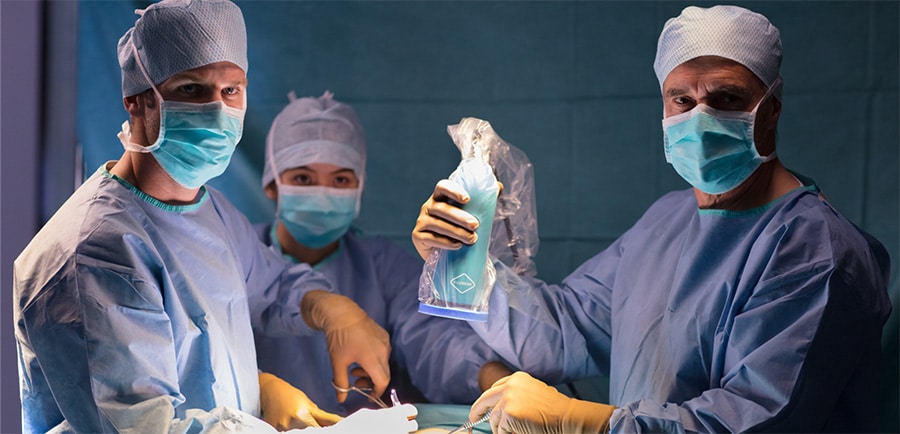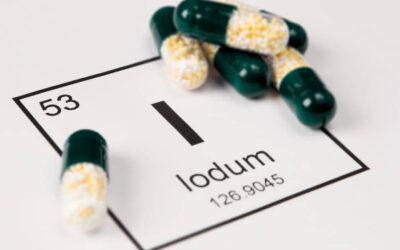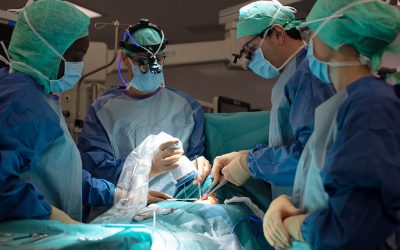Read More
How is thyroid dysfunction detected?
Main complications associated with a thyroidectomy
Thyroidectomy is a surgical procedure that consists of a horizontal incision in the neck to remove all or part of the thyroid gland.
Read More
Thyroid: what are the risks of surgery
The procedure is indicated for thyroid cancer, for any toxic adenoma measuring more than 3 cm (cancerous or pre-cancerous thyroid nodule), for toxic multinodular goitres (presence of suspicious cysts), in cases of increased volume of thyroid and for plunging (or endothoracic) goitres.
The risk of complications during a thyroidectomy are the same as in all surgical procedures, namely bruising or abscesses.
Specific complications of thyroidectomy are:
- Paralysis of the recurrent laryngeal nerves: Paralysis can present as an alteration to the voice and difficulties in raising its intensity. In the vast majority of cases, the paralysis is only temporary.
- Hypocalcaemia: This is caused by trauma to the parathyroid glands following a total thyroidectomy. These glands are very small and are concealed by the thyroid, and are sometimes difficult for the surgeon to identify, potentially resulting in unintentional injury. Decreased calcium in the blood is relatively frequent and mostly temporary. However, in some cases it may be permanent.
Calcium and vitamin D3 supplements are generally prescribed as a treatment for this deficiency (when it is temporary).
Solutions for a successful convalescence
After a thyroidectomy, the surgical area must be protected to foster healing. Patients should not take baths, go swimming, etc.
After three weeks, the scar will begin to “bud” – a phase during which the skin becomes pink and hardens. The hardening will gradually abate. Patients must also apply sunscreen with a SPF of 50+ for six months after surgery to stop the scar from darkening.
After surgery, it is essential to rest for two weeks before resuming any professional activity. During this period, patients should also avoid lifting heavy objects to protect the scar.
Physiotherapists generally recommend performing small movements to reduce the tension and stiffness in the neck and shoulder muscles.
In cancer cases, a curative radioactive-iodine treatment is often prescribed to remove cancer cells.
Avoiding the risks of post-surgical complications
Autofluorescence is a technology developed to improve the visualisation of the parathyroid glands
Due to their small size, it is often difficult to see the parathyroid glands, resulting in unintentional injuries causing post-thyroidectomy complications.
To improve the safety of surgery, FLUOPTICS© has developed FLUOBEAM® LX, a medical imaging device wholly dedicated to thyroid and parathyroid surgery, which improves the real-time visualisation of parathyroid glands thanks to their autofluorescence. Acting like a third eye, this device assists surgeons during the partial or total removal of the thyroid gland for a specific operation.
Read More
FLUOBEAM® LX: A breakthrough innovation for thyroid and parathyroid surgery
The FLUOBEAM® LX innovation identifies parathyroid glands at a rate of 25 images per second with a great depth of field.
The (partial or total) removal of the thyroid gland is a tricky operation that remains a source of concern for patients. Today, recent innovations in medical imaging make it easier to prevent post-thyroidectomy complications. Thanks to autofluorescence imaging, the visualisation of the parathyroid glands is enhanced thereby improving the safety of surgery.




